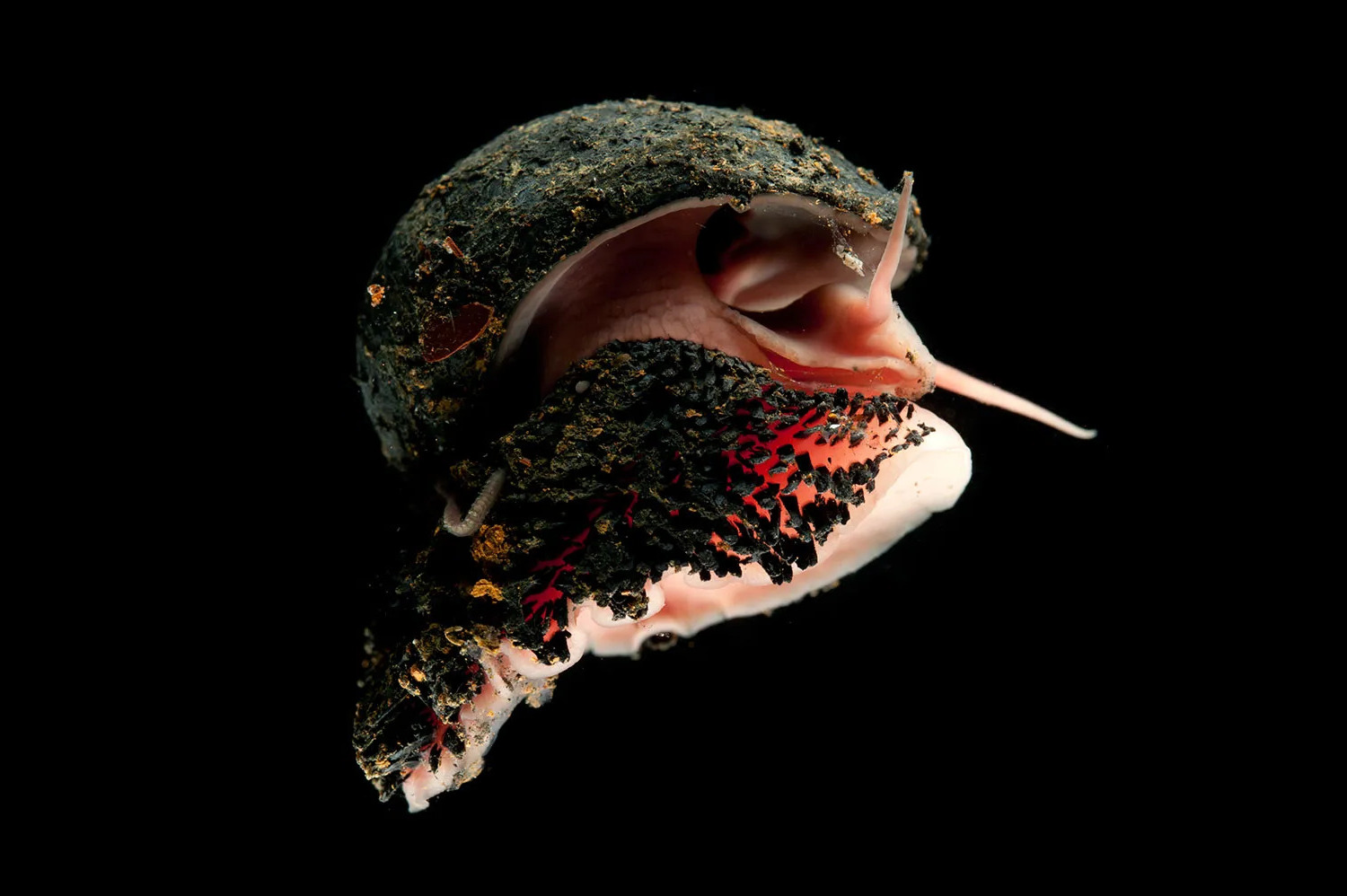
Ever heard of the volcano snail? This unique creature, also known as the scaly-foot gastropod, lives in one of the most extreme environments on Earth—deep-sea hydrothermal vents. What makes it so special? Its shell and foot are covered in iron sulfide, giving it a metallic appearance and making it one of the only animals known to incorporate iron into its body. Why should you care? Studying this snail helps scientists understand how life can thrive in extreme conditions, offering clues about potential extraterrestrial life. Ready to dive into more amazing facts? Let's explore 35 fascinating tidbits about this incredible snail.
What is a Volcano Snail?
The volcano snail, also known as the scaly-foot gastropod, is a unique creature found in the deep sea. Living near hydrothermal vents, these snails have adapted to one of the most extreme environments on Earth. Let's dive into some fascinating facts about these extraordinary animals.
Habitat and Environment
Volcano snails thrive in some of the harshest conditions imaginable. Their habitat is both fascinating and extreme.
- Deep-Sea Dwellers: These snails live at depths of over 2,400 meters (7,874 feet) in the Indian Ocean.
- Hydrothermal Vents: They are found near hydrothermal vents, where temperatures can soar above 350°C (662°F).
- Extreme Pressure: The pressure at these depths is immense, around 250 times greater than at sea level.
- Chemical-Rich Waters: The water around hydrothermal vents is rich in minerals and chemicals, which these snails use to their advantage.
Unique Physical Characteristics
Volcano snails have some of the most unusual physical traits among marine creatures. These adaptations help them survive in their extreme environment.
- Iron Shell: Their shells are coated with iron sulfide, making them incredibly tough and unique among snails.
- Scaly Foot: The foot of the snail is covered in iron scales, providing additional protection.
- Three-Layered Shell: The shell has three layers: an outer iron sulfide layer, a middle organic layer, and an inner aragonite layer.
- Small Size: Despite their tough exterior, these snails are relatively small, usually around 3-4 cm in length.
- Dark Coloration: Their dark, metallic appearance helps them blend into the shadowy depths of the ocean.
Diet and Feeding
Living in such a unique environment means these snails have developed specialized feeding habits.
- Chemosynthetic Bacteria: They rely on chemosynthetic bacteria that live in their gills for nutrition.
- Symbiotic Relationship: The bacteria convert chemicals from the vent water into organic compounds, which the snail then uses for food.
- No Need for Sunlight: Unlike most organisms, volcano snails don't rely on sunlight for energy, making them truly unique.
Reproduction and Lifespan
Understanding how these snails reproduce and their lifespan provides insight into their survival strategies.
- Egg Capsules: Female volcano snails lay egg capsules, which are then left to develop on their own.
- Slow Growth: These snails grow slowly due to the limited resources in their environment.
- Long Lifespan: They can live for several years, which is relatively long for a snail.
Scientific Significance
Volcano snails are of great interest to scientists due to their unique adaptations and potential applications.
- Biomineralization: Their ability to incorporate iron into their shells is a subject of study for biomineralization processes.
- Extreme Environment Adaptations: Studying these snails helps scientists understand how life can thrive in extreme conditions.
- Potential Medical Applications: The unique properties of their shells could inspire new materials for medical use.
Conservation Status
Despite their remote habitat, volcano snails face threats that could impact their populations.
- Deep-Sea Mining: The growing interest in deep-sea mining poses a threat to their habitat.
- Climate Change: Changes in ocean temperature and chemistry could affect hydrothermal vent ecosystems.
- Limited Range: Their limited distribution makes them vulnerable to environmental changes.
Interesting Tidbits
Here are some additional fascinating facts about volcano snails that highlight their uniqueness.
- Discovered in 1999: These snails were first discovered in 1999 during a deep-sea expedition.
- Named for Their Habitat: The name "volcano snail" comes from their proximity to hydrothermal vents, which resemble underwater volcanoes.
- Iron Armor: They are the only known animals to use iron sulfide as a structural material.
- No Eyes: These snails have no eyes, relying on other senses to navigate their dark environment.
- Heat Tolerance: They can withstand temperatures that would be lethal to most other organisms.
- Unique Evolution: Their adaptations are a result of millions of years of evolution in extreme conditions.
- Limited Mobility: They move slowly, conserving energy in their resource-scarce environment.
- Predator Defense: Their tough shells and scales provide excellent defense against potential predators.
- Scientific Curiosity: They continue to be a subject of fascination and study for marine biologists.
Future Research
Ongoing research aims to uncover more about these mysterious creatures and their potential applications.
- Genetic Studies: Scientists are studying their genetics to understand how they survive in such extreme conditions.
- Material Science: The iron-coated shells are of interest for developing new, durable materials.
- Environmental Monitoring: Studying these snails can provide insights into the health of hydrothermal vent ecosystems.
- Adaptation Mechanisms: Researchers are keen to learn more about the specific mechanisms that allow these snails to thrive.
- Conservation Efforts: Efforts are underway to protect their unique habitat from human activities.
Final Thoughts on Volcano Snails
Volcano snails, also known as scaly-foot gastropods, are truly fascinating creatures. Living in extreme environments around hydrothermal vents, these snails have adapted in ways that boggle the mind. Their iron-plated shells and unique symbiotic relationships with bacteria make them stand out in the animal kingdom. These adaptations not only help them survive but also thrive in conditions that would be lethal to most other life forms.
Understanding these snails gives us a glimpse into the incredible diversity of life on Earth. It also highlights the importance of studying and preserving unique ecosystems. Who knows what other amazing creatures are out there waiting to be discovered?
So next time you think about the ocean's depths, remember the volcano snail. It’s a testament to nature's ingenuity and resilience. Keep exploring, keep learning, and never stop being curious about the world around you.
Was this page helpful?
Our commitment to delivering trustworthy and engaging content is at the heart of what we do. Each fact on our site is contributed by real users like you, bringing a wealth of diverse insights and information. To ensure the highest standards of accuracy and reliability, our dedicated editors meticulously review each submission. This process guarantees that the facts we share are not only fascinating but also credible. Trust in our commitment to quality and authenticity as you explore and learn with us.


